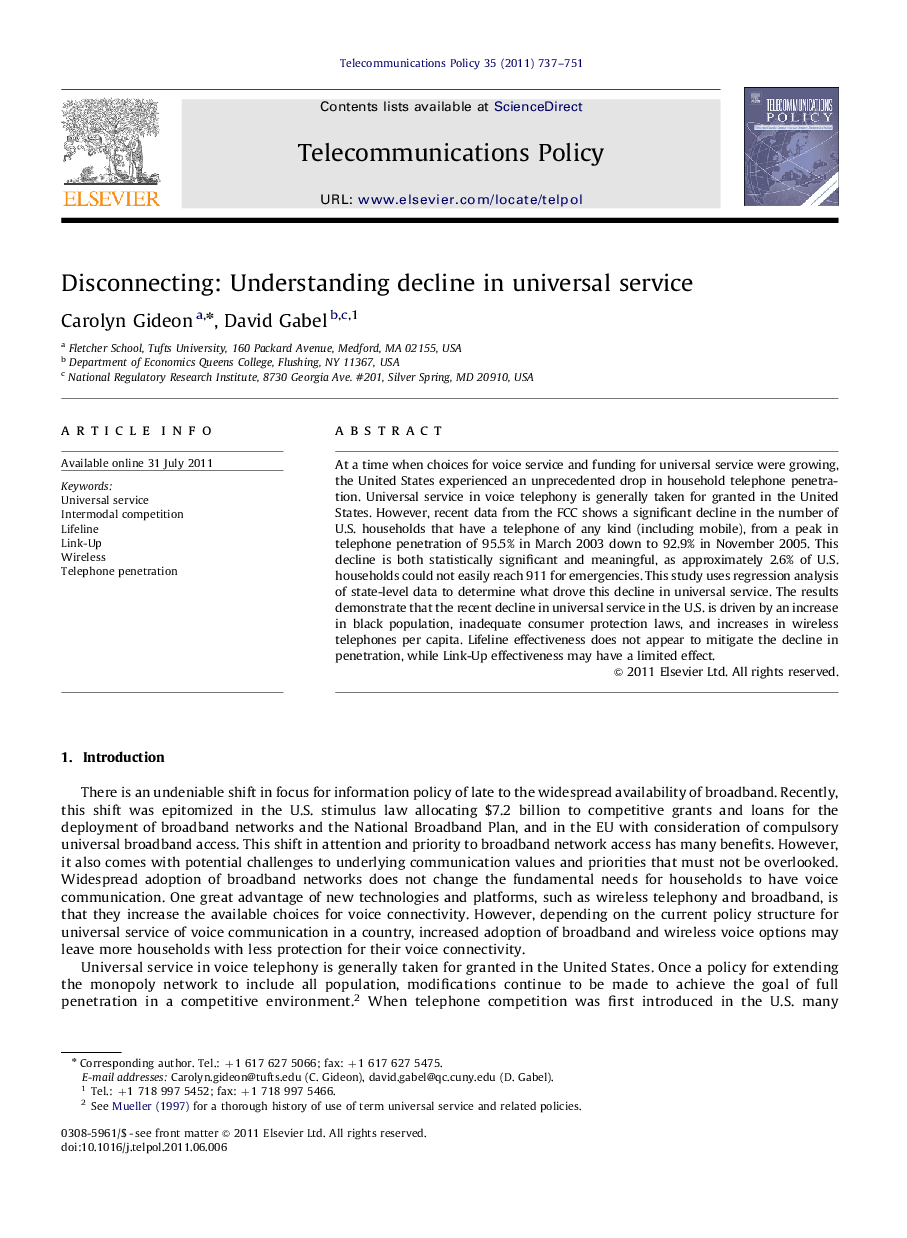| Article ID | Journal | Published Year | Pages | File Type |
|---|---|---|---|---|
| 556991 | Telecommunications Policy | 2011 | 15 Pages |
At a time when choices for voice service and funding for universal service were growing, the United States experienced an unprecedented drop in household telephone penetration. Universal service in voice telephony is generally taken for granted in the United States. However, recent data from the FCC shows a significant decline in the number of U.S. households that have a telephone of any kind (including mobile), from a peak in telephone penetration of 95.5% in March 2003 down to 92.9% in November 2005. This decline is both statistically significant and meaningful, as approximately 2.6% of U.S. households could not easily reach 911 for emergencies. This study uses regression analysis of state-level data to determine what drove this decline in universal service. The results demonstrate that the recent decline in universal service in the U.S. is driven by an increase in black population, inadequate consumer protection laws, and increases in wireless telephones per capita. Lifeline effectiveness does not appear to mitigate the decline in penetration, while Link-Up effectiveness may have a limited effect.
► Regression analysis of state-level data is used to determine what drove a statistically significant decline in U.S. household telephone penetration from 2003 to 2005, a time when choices for voice service and funding for universal service were growing. ► The recent decline in universal service in the U.S. is driven by an increase in black population, inadequate consumer protection laws, and increases in wireless telephones per capita. ► Lifeline effectiveness does not appear to mitigate the decline in penetration, while Link-Up effectiveness may have a limited effect.
